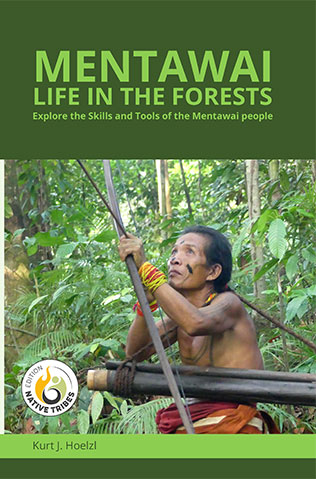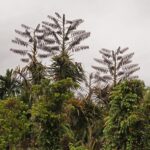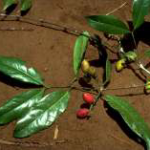Most areas of Papua New Guinea have bananas. Some people have them as their main staple food while in other areas they are just a snack food. There is a very large amount of variation within the banana varieties in Papua New Guinea. It is important to understand something about these types of bananas.
Within some of these groups, Papua New Guinea has more varieties than any other country in the world. Within the banana group of plants there are several wild ones. In Bougainville the rainforest has many wild inedible bananas. But this article is about the main group of edible kinds of bananas.

The banana story
Although this story of the history of bananas is a little complicated it is important because it is most likely that all these kinds of bananas probably originally developed in Papua New Guinea. It is also important for banana growers to recognise some of the important differences between the groups.
Originally there were small traditional bananas like some of the edible kinds but the fruit were full of seeds. One of these became a parent of present bananas and by scientists is represented by AA meaning both its sets of chromosomes came from an original plant (Musa acuminata [Syn. Musa banksi]). This plant occurs as a wild seeded plant in many areas along the north coast of mainland Papua New Guinea. This plant when it is without seeds gives an important group of local edible bananas called diploids. Varieties in the Gazelle with names like kekiau, gulum, pitu, gorop and katual belong to this group. But another wild seeded parent is also another parent of some of the present bananas. This plant is called “BB” by scientists, because it has two sets of chromosomes from an original plant (Musa balbisiana). This plant occurs in the Gazelle Peninsula and is called Okaoko. A similar banana plant in the Gazelle Peninsula is called Auko and is an edible cultivated banana without seeds.

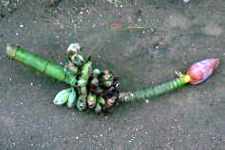
As well as both the wild seeded parents of bananas occurring in Papua New Guinea, they also occur as non-seeded edible bananas.
So the start of the banana story is that these two wild seeded parents have crossed.
AA x BB, results in AB
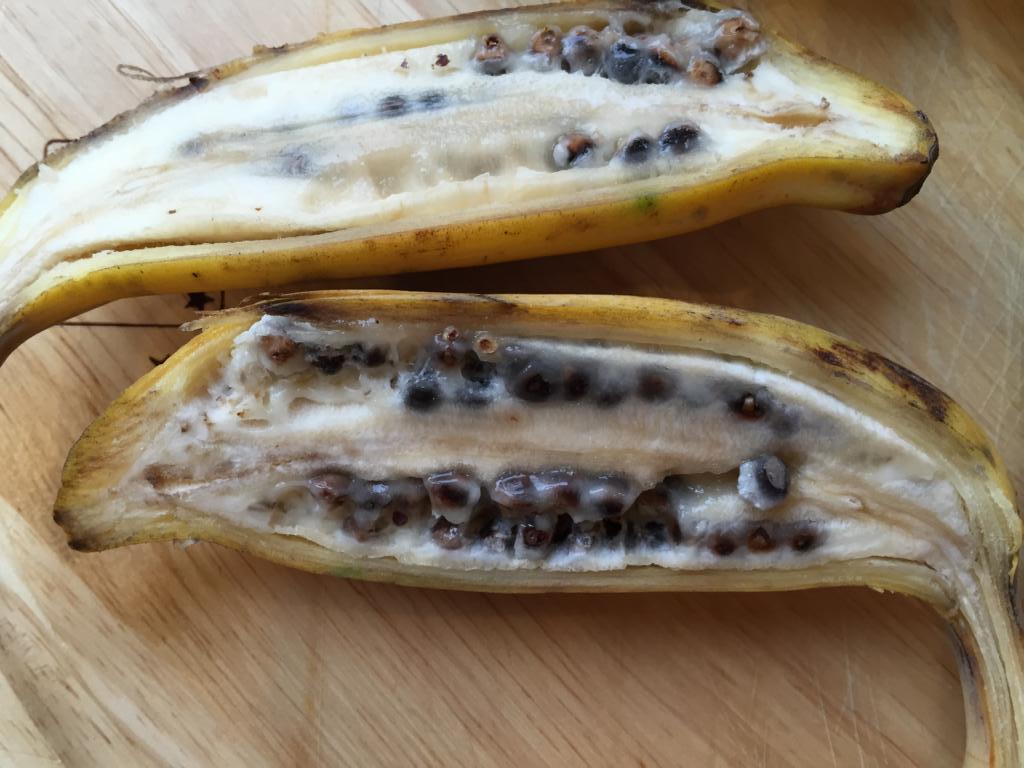
But another thing can occur with bananas and this is where they develop more than two sets of chromosomes (the threads that contain the messages that control breeds and breeding). So there can also be plants represented as:
- AAA
- AAB
- ABB
- AAAA
- AABB
- ABBB
Occasionally plants can cross with some of the other wild bananas in Papua New Guinea (Musa schizocarpa) and give ones such as AS which is called Kalakala variety in Morobe district or ABBS.
So the picture of the main group of bananas in Papua New Guinea starts to look something like this: (Using Tolai variety names)
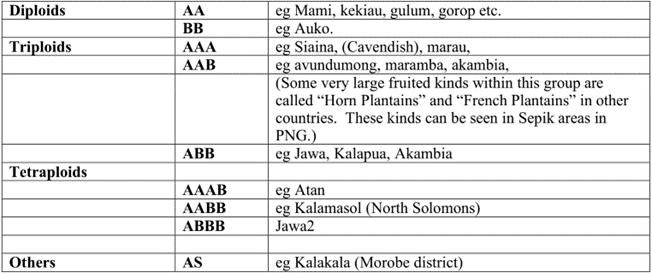
.
.


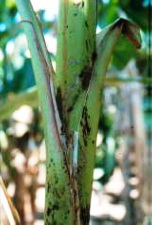

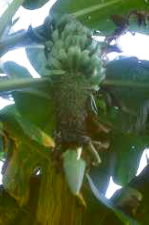
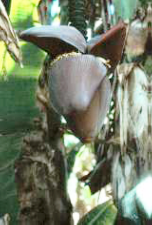
.

These traditional diploid bananas usually have only a few suckers and smaller bunches. They grow quickly but need to relocated and transplanted on a regular basis. They cannot tolerate poor soils and do not keep growing as bunches near houses nut are put in new gardens.

There are a range of triploid bananas. They tend to be large and can have chromosomes from both A and B parents. Some of these varieties produced large clumps of bananas and suckers. They can often grow for a long time near houses.
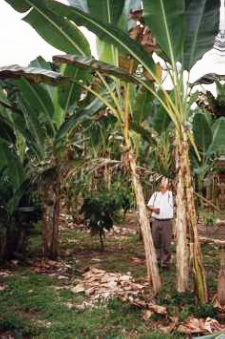
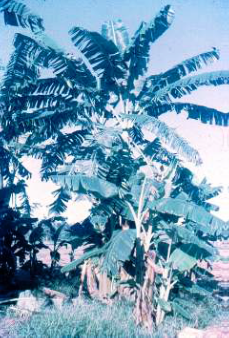
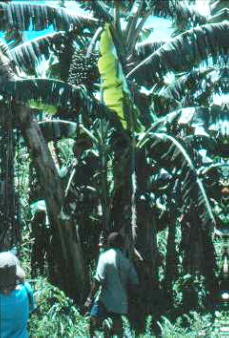
Why is understanding the banana story important?
With bananas it is important to put the right kind of banana in the right place. The different groups of bananas have some things in common. Often “A” means the banana can’t stand shade, cannot tolerate drought, needs fertile soil, and gets certain diseases. Similarly “B” means these plants can grow with more shade in drier soils and with lower soil fertility. As well, diploids (2 sets of chromosomes) are mostly smaller plants with fewer fruit and they produce less suckers. They need to be replanted after each crop of bananas. Some triploids such as ABB (Java) can often grow for many years in the one place and with poor soil. Some tetraploids such as (ABBB) are extremely large plants.
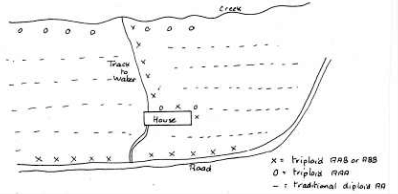
An understanding of these types can be seen in the way some Tolais lay out their gardens.
AA types are used as temporary shade for cacao.
AAA types are put in fertile areas near creeks.
AAB and ABB types are put around houses and along tracks leading to water etc., where they will be left to grow for many years.
Growing bananas
After choosing the type of banana, it is important to grow it well. A healthy sucker needs to be cleaned to be sure that insects or nematodes, or fungal diseases are not carried from one garden to the new garden. Choose a straight sword-like sucker, not one that has leaves hanging out wide as soon as it comes through the ground.
The sucker needs to be put in freshly cleared ground where the soil is fertile, or the soil needs to be built up by putting compost and plant material in the planting hole. A hole of 30 cm x 30cm is suitable for most varieties.
The spacing of the plant will depend on variety and whether it is being intercropped with other plants. Diploid plants can be 1.5 m apart and larger kinds need to be 2 m or more apart. Thought needs to be given to whether it is a kind that will be replanted within a year or left to grow as a large clump for several years.
Soils must be well drained and most bananas require a fairly fertile soil. For larger bunches of fruit, some suckers need to be removed on the kinds that sucker freely.
Bananas as food
The large number of varieties of bananas in Papua New Guinea means there are kinds of bananas for many different purposes. Some are sweet and soft and eaten fresh as a snack and baby food, e.g., Cavendish. Others are dry and starchy and need to be moistened in a soup. Some, e.g., kekiau, are quickly roasted in garden fires and eaten as snacks. Others are boiled or baked and eaten as a main starchy staple eg, Kalapua
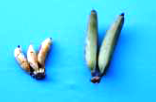


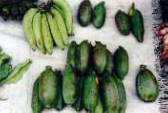
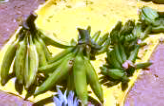
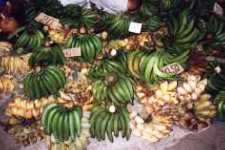
________________________________________________________________________________________________________________
Text and all photos at this article © Food Plant Solutions. The professional background and contact information of the author of this article can be found here.
.

